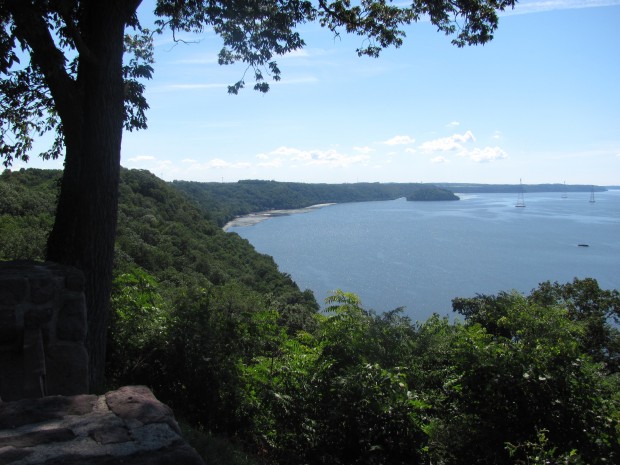Water quality not impacted by drilling, according to new report

Scott LaMar/ WITF
With continuous monitoring between 2010 and 2013, the Susquehanna River Basin Commission did not find any changes in water quality.
A new report shows no correlation between shale gas development and watershed impairment in the Marcellus region between 2010 and 2013.
This is the third such analysis from the Susquehanna River Basin Commission. The multi-state compact is made up of representatives from Pennsylvania, New York, Maryland, and the U.S. governments. It oversees the water withdrawals gas companies need in order to do hydraulic fracturing (fracking). The commission also coordinates state and federal-level environmental efforts within the river’s 27,500-mile watershed. Nearly 85 percent of the Susquehanna River Basin sits atop shale gas wells.
“We see this as the beginning of keeping an eye on things,” says Tyler Shenk, a supervisor for restoration and protection with the SRBC. “As we gather more data, we’ll know more. But there are no giant red flags at this point.”
Shenk says this analysis will serve as the commission’s baseline reference, despite the fact the monitoring began about two years after the Marcellus Shale boom took off in 2008.
“Pre-drilling data would be an ideal baseline, but we didn’t have the network set up yet,” he says.
Although the SRBC is charged with regulating water quantity, it does not regulate water quality. However in 2010, the commission began real-time water monitoring to observe the potential impacts of shale gas development. Its network is currently made up of 59 sensors, spanning Pennsylvania and New York.
With continuous monitoring between 2010 and 2013, researchers did not find any major changes in water quality, and with a few exceptions the overall water quality was good. Additionally, they did not find a relationship between aquatic insect life and the density of natural gas wells or wellpads upstream.
The research was funded internally from the commission’s operating budget. SRBC spokeswoman Gwyn Rowland says it will continue moving forward.
“We only have three years of data at this point, which a lot of scientists think is pretty small,” she says. “A lot of them would love to have five to 10 years of data.”
The SRBC’s large scale watershed analysis differs from the specific instances of water damage the state Department of Environmental Protection has linked to oil and gas development.
Since 2008, the DEP says there have been 258 cases of damage to private water supplies from oil and gas operations in Pennsylvania. Some of those incidents relate to low flow, rather than contamination. The department says they are evenly split between conventional and unconventional (Marcellus Shale) drilling.
















